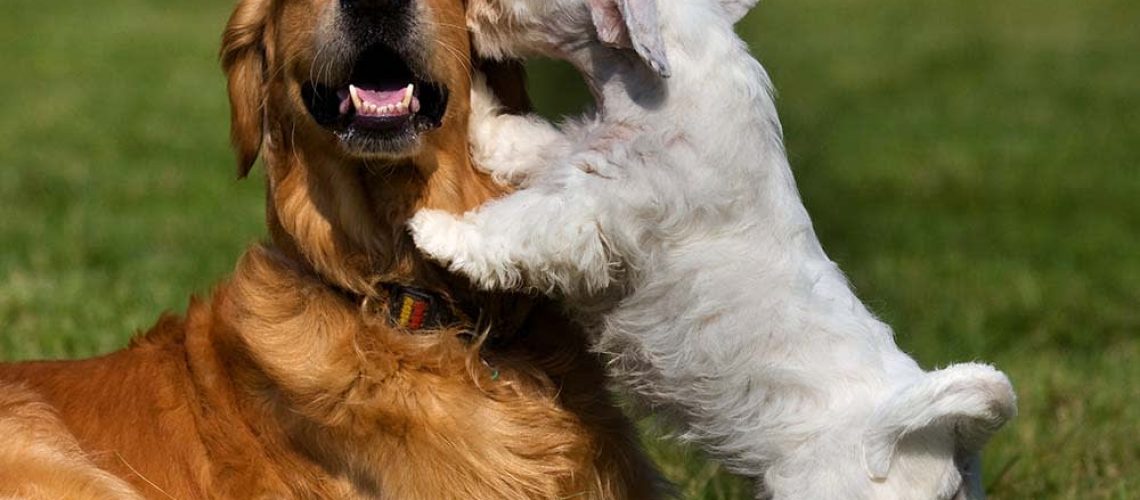Are you considering adding another furry friend to your family? Find out if getting a second dog is the right decision for you.
Key Takeaways:
- Consider your current dog's personality and preferences before getting a second dog.
- Ensure that you have enough time, energy, and resources to properly care for two dogs.
- Socialize the new dog with your current dog gradually to prevent conflicts or aggression.
- Be prepared for potential challenges such as increased expenses and the need for additional training and supervision.
- Getting a second dog can provide companionship for your current dog and enrich both dogs' lives if done thoughtfully.
The Benefits of Having a Second Dog
Having a second dog can bring many benefits to your family and your current pet. Firstly, having another furry friend can provide companionship for both dogs. They can keep each other company when you're not at home, and they can play together, which can help reduce boredom and loneliness. Additionally, having two dogs can also provide socialization opportunities. Taking them for walks or to the dog park together allows them to interact with other dogs and people, which can improve their social skills.
A second dog can also help with exercise. Dogs need regular physical activity to stay healthy, and having two dogs means they can play and run around together, providing each other with exercise. This can be especially beneficial if you have a high-energy breed that requires a lot of exercise.
Benefits of Having a Second Dog:
- Companionship for both dogs
- Socialization opportunities
- Exercise and playtime
Example:
```mermaid
graph LR
A[Family]
B[Dog 1]
C[Dog 2]
A --> B
A --> C
B --> C
```
In conclusion, getting a second dog has numerous benefits including companionship, socialization opportunities, and increased exercise for both dogs. However, it is important to consider factors such as space availability, time commitment, and financial responsibility before making the decision to bring another dog into your family.
How Getting a Second Dog Can Affect Your Pet's Behavior
Introducing a second dog into your household can have a significant impact on your existing pet's behavior. It is important to consider how your current pet may react to the presence of a new dog and how their dynamic may change. Some factors to consider include:
1. Personality and temperament:
Your current pet's personality and temperament play a crucial role in determining how they will respond to a new dog. If your pet is generally friendly and sociable, they may be more accepting of a new companion. However, if they are territorial or have shown aggression towards other dogs in the past, introducing another dog may require careful planning and gradual introductions.
2. Age and energy level:
The age and energy level of both dogs should be taken into account when considering getting a second dog. If your current pet is older or has low energy, they may not appreciate the constant playfulness and high energy of a younger dog. On the other hand, if your current pet is young and active, having another energetic companion can provide them with much-needed stimulation.
Factors to Consider Before Getting a Second Dog
Before bringing home another furry friend, there are several important factors to consider:
1. Space:
You need to assess whether you have enough space in your home for two dogs. Each dog should have their own designated area for eating, sleeping, and playing to avoid potential conflicts over territory.
2. Time commitment:
Owning two dogs requires more time commitment compared to having just one. You will need to allocate additional time for walks, training sessions, grooming, feeding, and individual attention for each dog.
3. Financial considerations:
Having two dogs means double the expenses. Consider the cost of food, veterinary care, grooming, and any additional supplies or equipment that may be needed.
The Time and Effort Required for Owning a Second Dog
Owning a second dog can be rewarding but also demands additional time and effort. Here are some important points to keep in mind:
1. Exercise and mental stimulation:
Both dogs will require regular exercise to stay physically fit and mentally stimulated. This means longer walks, playtime, and potentially engaging in activities such as puzzle toys or obedience training.
Tips for managing exercise:
- Create a schedule to ensure each dog gets their fair share of exercise.
- Consider enrolling both dogs in obedience classes or agility training to provide mental stimulation.
Can Having a Second Dog Help with Loneliness or Separation Anxiety?
Having a second dog can potentially help alleviate loneliness or separation anxiety in your current pet. However, it is not guaranteed to solve these issues entirely. Some factors to consider include:
1. Compatibility:
The new dog should have a compatible personality and energy level with your current pet. If they get along well and enjoy each other's company, it can provide comfort and companionship when you are away.
2. Gradual introductions:
To ensure a smooth transition, introduce the new dog gradually to your existing pet. Start with short supervised interactions and gradually increase the duration as they become more comfortable with each other.
Potential Drawbacks and Challenges of Owning Two Dogs
While owning two dogs can be rewarding, there are also potential drawbacks and challenges to consider:
1. Increased expenses:
Owning two dogs means double the expenses for food, veterinary care, grooming, and other supplies. It is important to budget accordingly to ensure you can provide for both dogs adequately.
2. Time commitment:
Having two dogs requires more time commitment in terms of training, exercise, and individual attention. If you have a busy schedule or limited time availability, it may be challenging to meet the needs of both dogs.
Tips for Introducing a New Dog to Your Existing Pet
Introducing a new dog to your existing pet should be done carefully to minimize stress and potential conflicts. Here are some tips for a successful introduction:
1. Neutral territory:
Choose a neutral location such as a park or a friend's backyard for the initial meeting. This helps prevent territorial behavior from either dog.
Tips for introducing on neutral territory:
- Keep both dogs on leashes initially.
- Allow them to sniff each other while maintaining control over their movements.
- If all goes well, gradually increase the duration of their interactions.
Signs That Your Living Situation May Not Be Suitable for Two Dogs
Owning multiple dogs requires careful consideration of your living situation. Here are some signs that your current environment may not be suitable for two dogs:
1. Limited space:
If you live in a small apartment or have limited outdoor space, it may not provide enough room for two dogs to roam and play comfortably.
2. Noise restrictions:
If you live in an apartment complex or a neighborhood with strict noise regulations, having two dogs may increase the chances of noise complaints from neighbors.
Tips for Managing the Expenses of Owning Multiple Dogs
Owning multiple dogs can be costly, but there are ways to manage expenses effectively:
1. Buy in bulk:
Purchasing dog food and supplies in bulk can help save money in the long run. Look for deals and discounts offered by pet stores or consider joining a wholesale club.
2. Prioritize preventive care:
Investing in regular veterinary check-ups, vaccinations, and preventive medications can help prevent costly health issues down the line.
Tips for managing expenses:
- Compare prices of different brands and products to find the most cost-effective options without compromising quality.
- Consider pet insurance to help cover unexpected medical expenses.
style="color:#880E4F;">In Conclusion:Adding a second dog to your family can be a wonderful experience, but it is important to carefully consider the factors involved. It can provide companionship and playmates for your current dog, as well as bring even more joy and love into your home. However, it is crucial to assess your lifestyle, resources, and ability to provide proper care and attention to both dogs. Ultimately, the decision should be based on what is best for you, your current dog, and any potential new addition. Remember to research breeds, consult professionals if needed, and ensure that you are fully prepared for the responsibilities of owning multiple dogs before making a final decision. |
https://www.youtube.com/watch?v=Oy77pYAMoac&pp=ygUcU2hvdWxkIFlvdSBHZXQgYSBTZWNvbmQgRG9nPw%3D%3D
Are dogs happier with a second dog?
Having more dogs can create a sense of belonging and security for your pet. Some dogs may feel lonely without a companion, and having another dog can help reduce this feeling of loneliness. Additionally, if your dog experiences separation anxiety, having another dog around may provide comfort and support.
Are 2 dogs easier than 1?
However, the reality is that having two dogs doesn't necessarily mean more work - in fact, it can often be simpler. And although it will be more expensive than having just one dog, it won't be double the amount. This is because dogs often share toys, beds, and other items.
Is it better to have 2 dogs of the same gender?
When deciding on a dog breed, it's important to consider the gender of the dog. Generally, opposite-sex dogs tend to get along better and create a happier and safer home environment. Same-sex combinations of dogs often end up fighting, and sometimes it can even be fatal. Even if they establish a dominance hierarchy, the situation may not improve much.
What is the best age to get a second dog?
It is often suggested by breeders that it is best to wait until your first dog is at least one to two years old before introducing a second dog to the family. This is because older dogs may not have the physical ability to play with or handle the energy of a puppy.
What is second dog syndrome?
In the world of dog ownership, there is a commonly used term known as "Second Dog Syndrome." This phrase accurately captures the experience of bringing another dog into the household, although it doesn't always have a positive connotation. As humans, we tend to overlook the significant time and effort required to properly raise a puppy.
What is the rule of 2 with dogs?
The two second rule is a crucial aspect of dog training. Dogs live in the present moment, so timing is crucial. It is important to provide feedback to your dog within two seconds of their behavior in order for them to understand whether they are being corrected or rewarded.

















